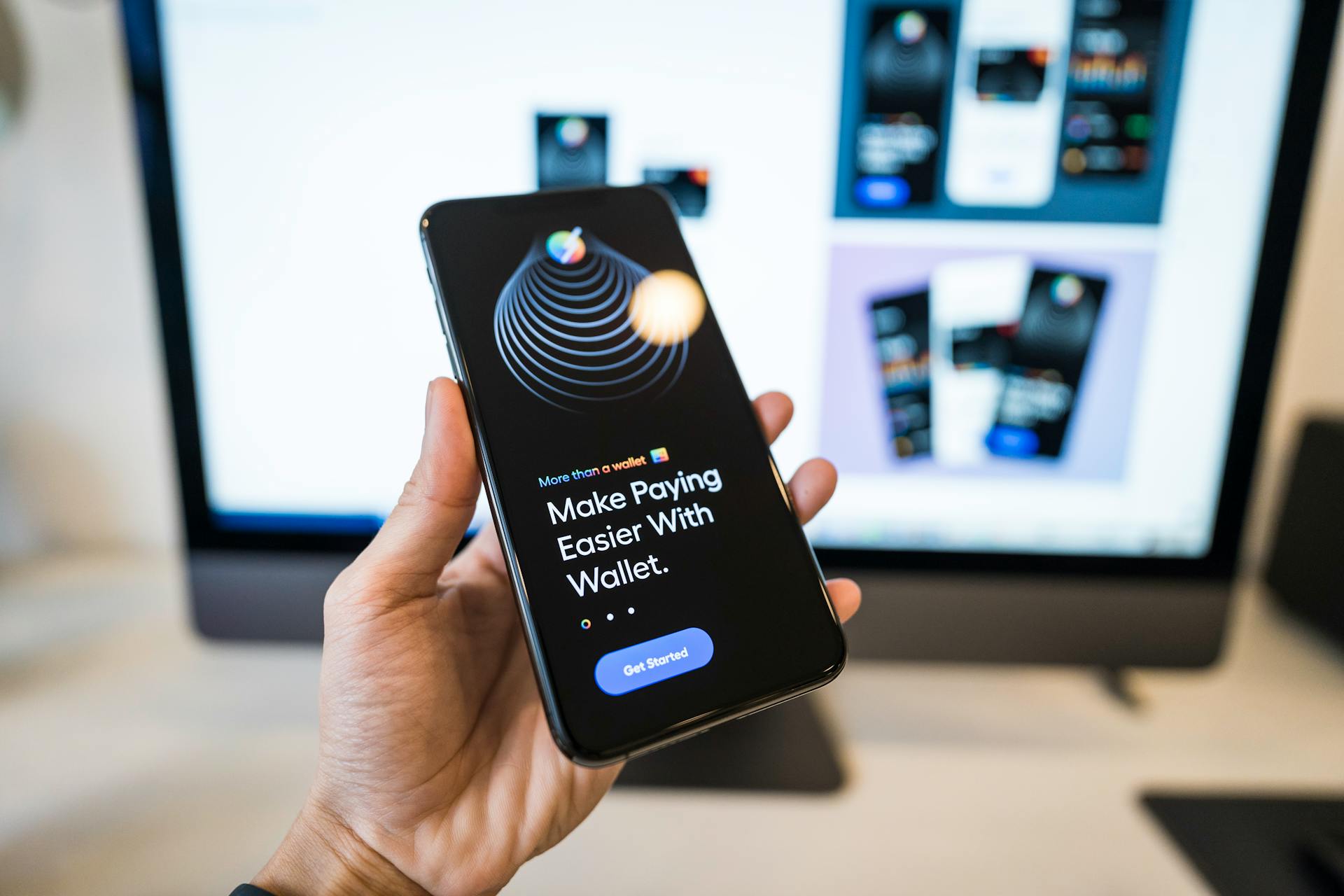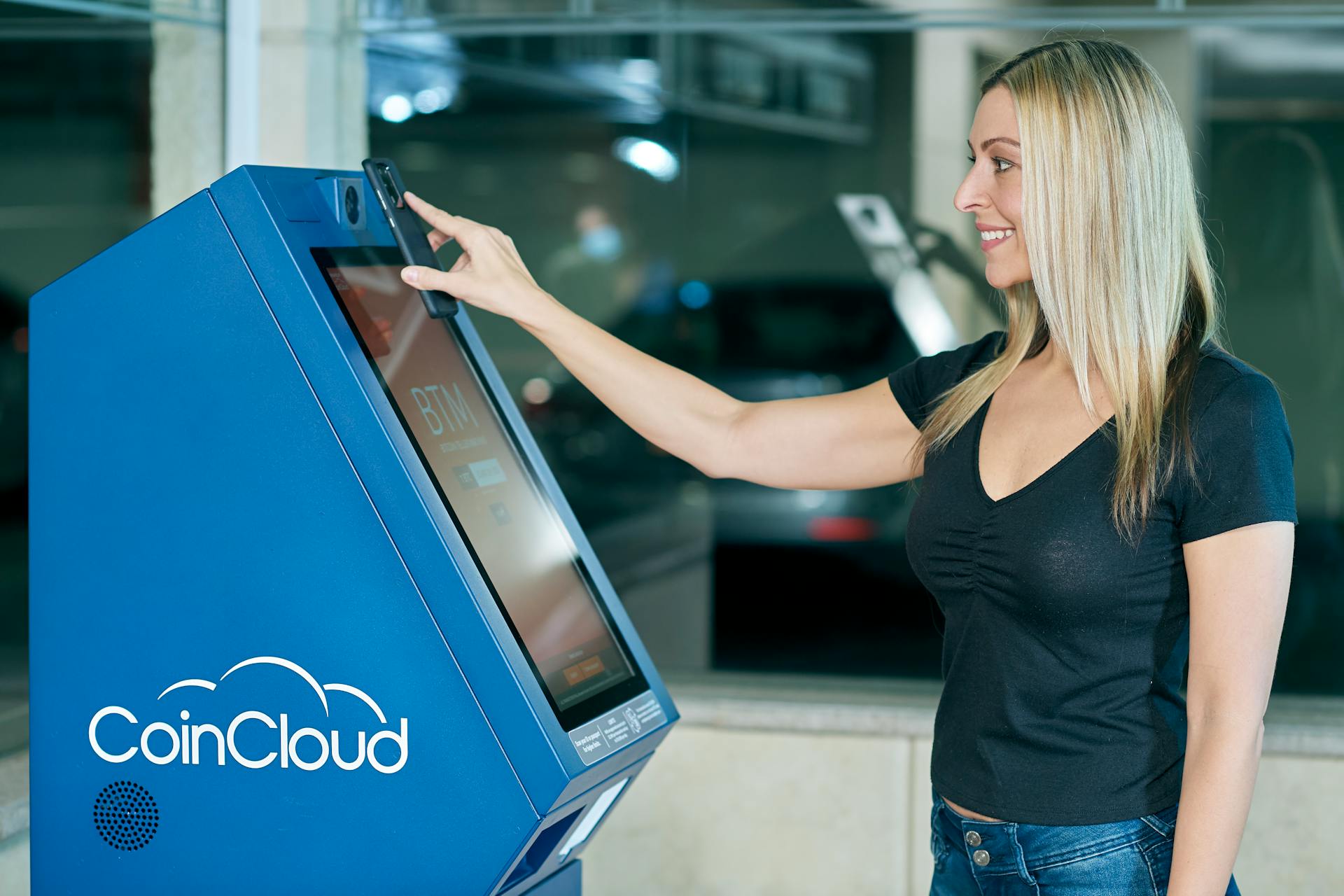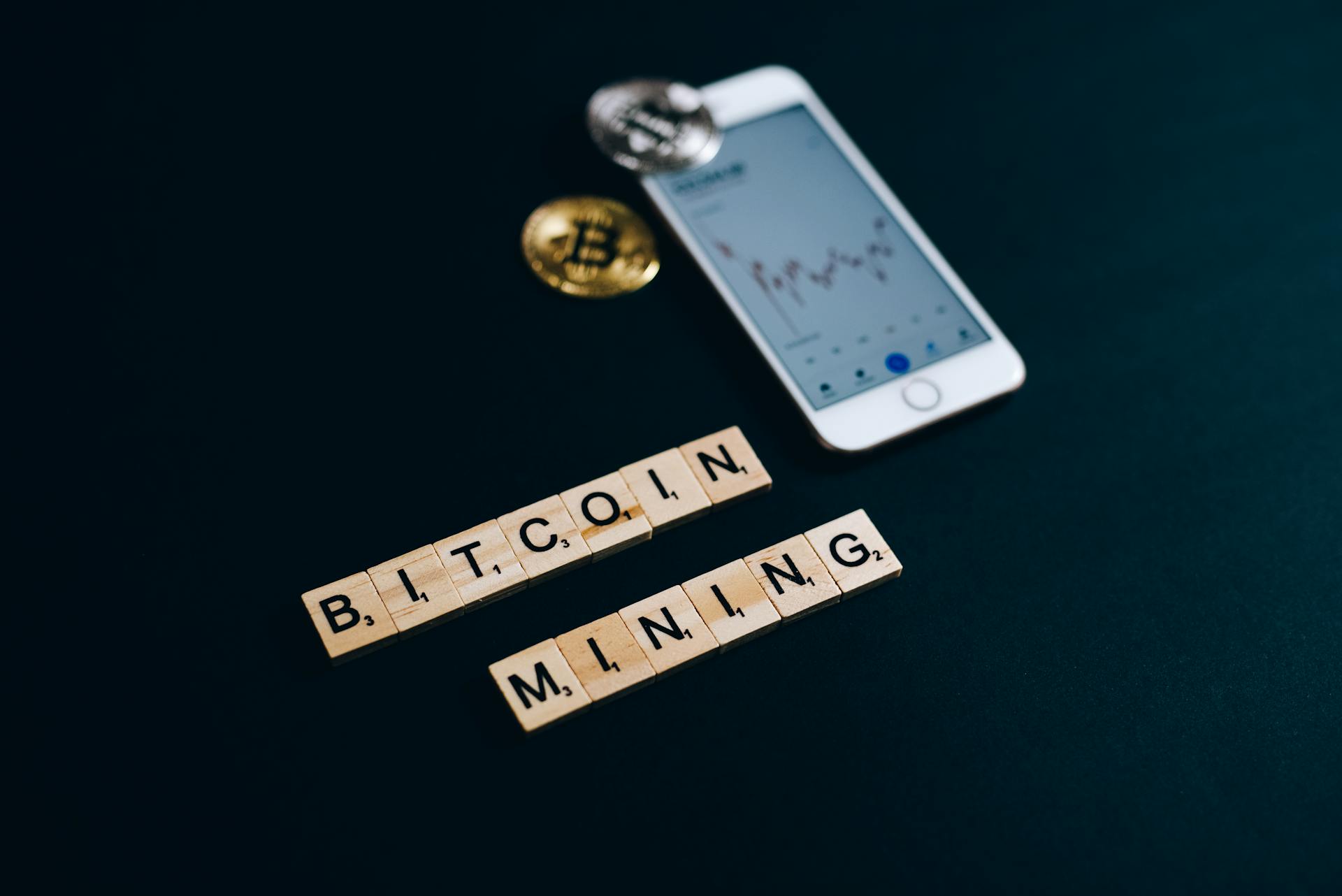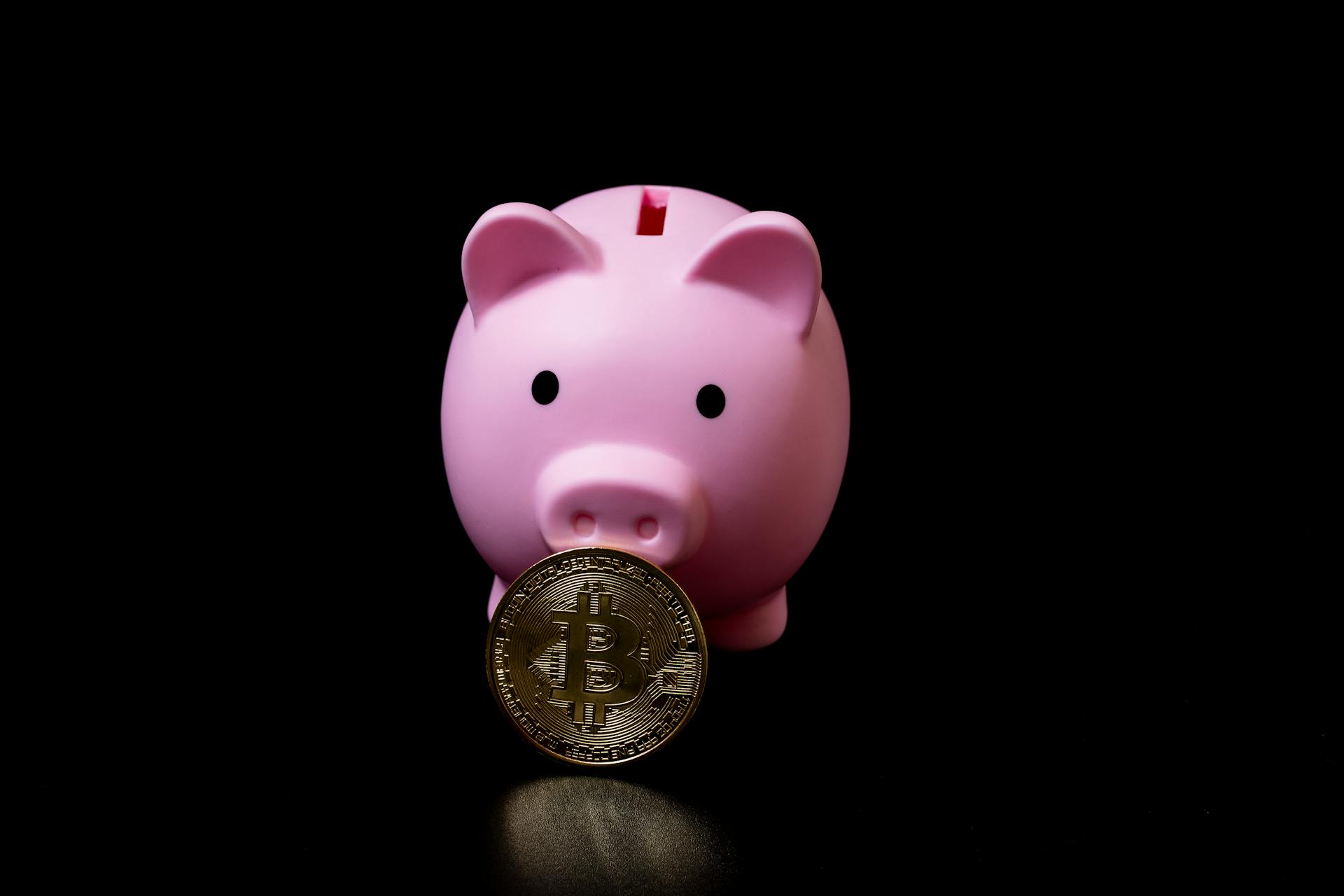
Digital wallets have revolutionized the way we make payments, offering a convenient and secure way to store our financial information. They're essentially digital containers that hold our payment methods, such as credit or debit cards, and can be used to make transactions online or in-store.
Apple Pay, for instance, uses Near Field Communication (NFC) technology to enable contactless payments. Google Pay, on the other hand, uses a tokenized system to protect our sensitive information.
Digital wallets offer numerous benefits, including speed, security, and convenience. They allow us to make payments without the need for cash or cards, and many also offer rewards and loyalty programs.
Samsung Pay, for example, supports both NFC and magnetic stripe technology, making it compatible with a wide range of payment terminals.
Digital Wallet Examples
Digital wallets have become a convenient way to make payments without the need for physical cards. Apple Pay, Google Pay, and Venmo are just a few examples of popular mobile wallets.

You can also use digital wallets like PayPal, which has a revenue of $29.77 billion in FY2023, and Cash App, which has transformed into a multifaceted financial platform with 50 million active users. Cash App's digital wallet, Cash App Pay, enables customers to make payments to merchants by scanning a QR code.
Here are some examples of digital wallets:
- Apple Pay
- Google Pay
- Venmo
- PayPal Digital Wallet
- Cash App Pay
- The Dwolla Balance
These digital wallets offer a range of services, including contactless payments, peer-to-peer transactions, and the ability to store credit cards, debit cards, and more.
Three Examples
Digital wallets have become increasingly popular over the years, and there are many examples of successful digital wallets. Here are three examples:
Apple Pay is the most dominant and widespread digital wallet on the market, and it's available on iPhones, iPads, Apple Watches, and Mac computers. It enables both online and in-store transactions, and is accepted on millions of websites and apps.
Google Pay is another popular digital wallet that allows users to store credit cards, debit cards, boarding passes, gift cards, and more. It uses encryption and tokenization to protect user data.
Venmo is a popular mobile wallet that lets users send and receive money, often used between family and friends to split bills or pay for goods. Retail businesses can also use Venmo to take payments for goods both online and in physical stores.
Here are some examples of mobile wallets that are expected to nearly double in use between 2020 and 2025:
- Apple Pay
- Google Pay
- Venmo
Note: These are just a few examples of digital wallets, and there are many more available.
Zelle
Zelle is a digital wallet that allows users to transfer funds to friends or family using just an email address or US mobile phone number. It's integrated with over 2,000 US banking applications.
Zelle was introduced in 2017 as the replacement for clearXchange payment platform. Its popularity has been growing, with a FY 2023 transaction volume of US$806bn.
You can use Zelle directly through a banking application, regardless of who you bank with. This makes it a convenient option for those who want to transfer funds quickly.
Zelle is operated by Early Warning Services, which is owned by major US banks. The CEO of Early Warning Services, and therefore Zelle, is Cameron Fowler.
Zelle is available only in the United States and enables users to send and receive funds using their checking account or debit card.
Suggestion: Is a Zelle Transfer Instant
Types of Digital Wallets
There are several types of digital wallets available, each with its own unique features and uses. Some digital wallets, like CashApp and PayPal, allow users to make payments online and offline, while others, like Walmart Pay, are limited to specific merchants.
A semi-closed wallet, on the other hand, allows users to make transactions at specific merchants and locations that have a contract with the issuer. Examples of semi-closed wallets include Zelle, Stripe, and Square.
Some popular digital wallets include Apple Wallet, Samsung Wallet, Google Wallet, Venmo, and Zelle. These wallets can be used for a variety of transactions, from making purchases to sending and receiving money.
Here are some examples of digital wallets and their types:
Digital wallets can also be categorized into different types, including closed, semi-closed, and crypto wallets. Each type has its own unique features and uses, and users may choose to use multiple digital wallets depending on their needs.
Types of
There are several types of digital wallets available, each with its own unique features and uses.
A semi-closed wallet allows users to make transactions at specific merchants and locations that have a contract with the issuer, but doesn't allow cash withdrawal.
Some popular examples of semi-closed wallets include Zelle, which partners directly with banks so users can instantly send and receive money in their bank account.
A closed wallet is a proprietary digital wallet developed by a company that sells goods and services, and can only be used to make transactions with its issuer.
Major retailers like Target offer closed wallets to enable faster payments online and in-store.
A semi-closed wallet lets users receive money into their bank accounts but doesn’t allow cash withdrawal, and users can transfer funds to others using the same payment portal.
Some examples of semi-closed wallets are Stripe, Square, and PayTM.
There are five main types of digital wallets, including open wallets like CashApp and Apple Wallet, which allow users to make transactions at any merchant that accepts digital payments.
Here's a breakdown of the different types of digital wallets:
You may use more than one digital wallet, depending on the features and uses you need.
Crypto

A crypto wallet is a type of digital wallet that allows users to store, send, and receive cryptocurrencies like Bitcoin and Ethereum.
With a crypto wallet, users can spend cryptocurrency at a growing list of merchants, including Microsoft and Starbucks.
Leading crypto wallet platforms include Coinbase and Crypto.com, which store users' private keys for secure access to their cryptocurrency coins.
Crypto wallets store private keys, which gives users access to their cryptocurrency coins that live in an online ledger known as a blockchain.
For more insights, see: Gcash Crypto
IoT
An IoT wallet is a type of digital wallet that allows payments from wearable devices, appliances, and other everyday objects.
These devices are already online, so users don't need a separate device to access their digital wallet.
You can order groceries directly from a smart fridge using an IoT wallet, making it a convenient and hands-free shopping experience.
IoT wallets are enabled by the Internet of Things (IoT) technology, which connects devices to the internet, enabling seamless transactions.
Tokenization

Tokenization is a key security feature used by mobile wallets to protect sensitive data from theft or manipulation.
It replaces sensitive personal data during transactions with a temporary series of numbers called a token, allowing customers to make payments without revealing their primary account number (PAN) of the credit card.
This token is generated once payment details are collected and is then stored and sent to the merchant's payment processor.
The encrypted token is then sent to an automated clearing house (ACH) for processing and verification, which is a crucial step in completing the transaction via mobile wallet.
For another approach, see: Digital Wallet Data Cloud
How They Work
Digital wallets use various technologies to enable payments. QR codes, for example, are unique codes that some apps use to initiate payments. You scan the code with your smartphone's camera and then authorize the payment using your digital wallet.
Near Field Communication (NFC) and Magnetic Secure Transmission (MST) are also used by digital wallets. NFC allows two devices to "speak" to each other when they're in close proximity, while MST uses magnetic waves to transmit data, similar to swiping a credit card's magnetic stripe.
To use a digital wallet, you'll need to enter your card information into the app or site of your choice. Your information will then be encrypted, and you'll only be able to use the wallet when you unlock your device and authorize its use.
Some digital wallets, like Apple Pay and Google Pay, use NFC technology. To use one of these digital wallets, the merchant must have compatible card readers at checkout. This technology allows for contactless payments, making it convenient to pay for purchases without swiping or inserting your card.
Digital wallets also use QR codes, which are barcodes that can be scanned with your smartphone's camera. In the PayPal app, for example, you can generate a QR code that lets you use your account to pay for an item in a store.
Here are some common technologies used by digital wallets:
- Near Field Communication (NFC)
- Magnetic Secure Transmission (MST)
- Quick Response (QR) codes
These technologies enable digital wallets to process payments securely and efficiently. By using one of these digital wallets, you can make payments at most retailers that accept contactless payments.
Benefits and Features
Using a digital wallet can be a game-changer for your daily life. It's more convenient than carrying around a physical wallet, freeing up pocket space and allowing you to store multiple types of cards in one place.
Digital wallets offer a range of benefits, including security, convenience, and speed. In the US, per-user proximity mobile spending is expected to nearly double by 2026, reaching $7,827.
One of the biggest advantages of digital wallets is their safety features. Digital payments have the added protection of data encryption and tokenization, making them safer than traditional debit or credit card transactions.
Here are some examples of what you can store in a digital wallet:
- Credit or debit cards
- Boarding passes
- Hotel reservations
- Concert tickets
- Gift cards
- Coupons
- Loyalty rewards cards
Some apps even offer their own digital wallets, like Starbucks, which rewards customers with "stars" that can be redeemed for free drinks and other perks.
Accepting Digital Payments
Around 47% of consumers say they won't shop at a store that doesn't offer contactless payment. This is a significant number, and it highlights the importance of accepting digital payments.
Merchants are taking notice, with 53% planning to expand their mobile payment options in 2022. By accepting digital payments, businesses can attract more customers and stay competitive.
To accept mobile wallet payments, you need to advertise that you accept them. This can be done by adding retail signage at the payment terminal and displaying a contactless logo. You can also ask customers if they're interested in paying with a mobile wallet, which can help encourage them to do so.
Having the right point-of-sale system is crucial for accepting mobile wallet payments. Look for a system that can process multiple payment methods, including mobile wallets and NFC cards. Many POS systems come with this technology built-in, so it may be a simple matter of activating the feature.
Shopify's POS system is a great example of a system that can accept mobile payments. It allows you to process purchases, includes POS hardware, and accepts mobile payments, making it a convenient option for customers.
Digital Wallet Providers
Digital Wallet Providers offer a range of services, from mobile payments to loyalty programs.
Apple Pay, for example, allows users to make payments with their iPhone or Apple Watch, while Google Pay supports a wide range of payment methods, including credit and debit cards.
PayPal is another popular digital wallet provider, with over 400 million active accounts worldwide.
Amazon
Amazon offers a convenient and secure digital wallet experience through its Amazon Pay service. With no monthly commission for use, Amazon Pay provides low transaction fees.
Amazon Pay supports various payment functions, including SEPA payments in the EU and SWIFT payments globally. This allows users to make payments in their national currency.
The Amazon Pay system offers a simple registration process that takes no more than a few minutes. Users can register and start making payments quickly.
Amazon Pay allows users to pay external merchants using their Amazon accounts. This brings the speed and security of a digital wallet to more merchants than just Amazon.
Take a look at this: Amazon Pay Barcode
Dwolla
Dwolla offers digital wallet-like services for businesses, allowing them to hold and move funds in and out of their balance as if it were a wallet.
The Dwolla Balance is a key feature that enables users to send payments via automated clearing house (ACH), real-time payment (RTP), or to a debit card with push-to-debit.
Dwolla partners with major US banks, such as Bank of America, to facilitate these transactions.
Revenue generated by Dwolla in FY2023 was US$10.2m.
Dwolla prioritizes security by not requiring users to share their banking information, instead identifying them by email address or cell phone number.
This approach allows users to remain completely anonymous if they choose to do so.
Google is a digital wallet provider that has made significant strides in the industry. Google Pay, formerly known as Google Wallet and Android Pay, was born in 2018.
One of the most notable features of Google Pay is its ease of use. Shoppers can simply look for the relevant icon to use Google Pay when checking out, and no internet connection is required for in-person transactions.
Google Pay offers an easy way to pay on various websites, within apps, and also in stores using cards saved to customers’ Google accounts. This convenience makes it a popular payment method globally.
In fact, 38% of US in-store POS purchases were done with Google Pay in 2023. This shows just how widely accepted Google Pay has become.
Google Wallet, an updated version of Google Pay, stores everything from cards and tickets to digital keys and IDs on your Android device. For added security, Google Wallet always encrypts your card information.
To use Google Pay, customers need to connect a payment card or bank account to their Google Pay account. Then, they can use their mobile as a payment method anywhere that accepts contactless payment.
Frequently Asked Questions
What is the most popular digital wallet?
According to market trends, Apple Pay is currently the most widely used digital wallet, with a significant user base across various platforms. Its popularity can be attributed to its seamless integration with Apple devices and widespread merchant acceptance.
Is Venmo a digital wallet?
Yes, Venmo is a digital wallet that enables users to make and receive payments. It's primarily used for peer-to-peer transactions, but also supports contactless payments at select merchants.
Is Zelle considered a digital wallet?
Zelle is not typically considered a digital wallet, but rather a peer-to-peer payment service that allows users to send and receive money directly from their bank accounts. However, it can be used in conjunction with digital wallets for added convenience.
Is PayPal an e-wallet?
Yes, PayPal is considered an e-wallet, allowing users to store and make payments using a digital account linked to their bank or credit card. It's a popular example of an open digital wallet.
Sources
Featured Images: pexels.com


